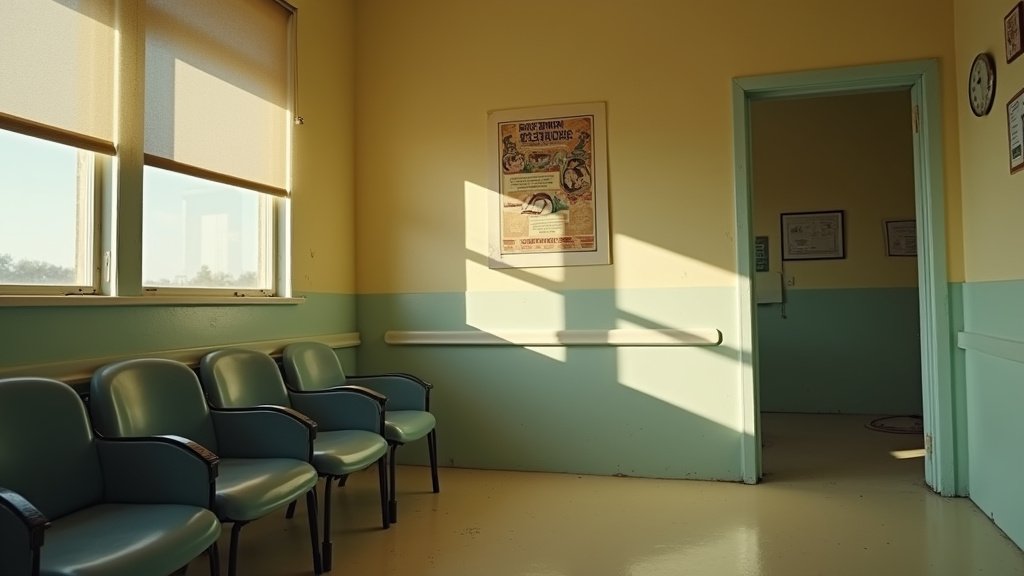The recent conclusion of a significant measles outbreak in West Texas, which saw hundreds infected and tragically claimed the lives of two children, serves as a critical wake-up call. While this particular outbreak may be over, health officials and experts warn that the underlying causes—a pervasive decline in childhood vaccination rates—signal a worrying trend that could lead to far worse public health crises in the future. This news from Texas underscores a global challenge: the resurgence of preventable diseases in an era marked by vaccine hesitancy and pandemic-induced disruptions to immunization programs.
The Texas Measles Outbreak: A Grim Snapshot
The outbreak, primarily centered in Gaines County, Texas, began in late January and officially concluded on August 18, 2025, after a period without new cases. During its course, the Texas Department of State Health Services (DSHS) confirmed over 760 infections, with approximately 99 individuals hospitalized. The devastating impact was most keenly felt in the loss of two young, unvaccinated children. The virus’s reach extended beyond West Texas, with cases linked to the initial outbreak appearing in at least three other states and spreading across 35 Texas counties. This event marked the state’s largest measles outbreak in three decades, highlighting a significant breakdown in community immunity.
The Root Cause: Declining Vaccination Rates
At the heart of the Texas measles resurgence lies a troubling decline in vaccination coverage. Studies reveal that childhood immunization rates in Texas, particularly for the measles-mumps-rubella (MMR) vaccine, have been on a downward trajectory, falling below the critical 95% threshold required for herd immunity. This trend was exacerbated by the COVID-19 pandemic, which disrupted routine healthcare services, leading to missed appointments and a decrease in vaccine uptake nationwide. Factors such as vaccine hesitancy, the spread of misinformation, and an increase in non-medical vaccine exemptions further weaken community protection. Gaines County, the epicenter of the Texas outbreak, notably had one of the highest rates of school-aged children opting out of vaccinations, with nearly 18% seeking exemptions in the 2023-24 school year.
Global Echoes: A Worldwide Problem
The challenges faced by Texas are not isolated; they mirror a global public health crisis. Worldwide, measles cases and outbreaks have surged, driven by similar factors of declining vaccination coverage. Between 2020 and 2022, over 61 million measles vaccine doses were missed or postponed globally due to COVID-19 disruptions, leaving millions of children vulnerable. The World Health Organization reported that in 2023, over 10 million people were infected with measles, resulting in more than 100,000 deaths, predominantly in low-income countries with weakened health systems. This global pattern means that measles can easily cross borders, posing a constant threat to communities with lower immunization rates.
The Consequences of Complacency
The resurgence of measles carries severe implications. Measles is an extremely contagious airborne virus; one infected person can transmit it to up to nine out of ten unvaccinated individuals in close contact. Complications can include pneumonia, encephalitis (brain swelling), deafness, and even death. As experts warn, if current trends of declining vaccination continue, diseases like measles, and potentially even others like polio and rubella, could become endemic in the U.S. again, reversing decades of public health progress. This resurgence strains public health resources, incurs significant economic costs, and jeopardizes the hard-won elimination status of diseases within the United States.
The Path Forward: Rebuilding Immunity
Addressing this escalating threat requires a multi-pronged approach. Public health officials emphasize that vaccination remains the safest and most effective defense against measles. Strategies must include robust public health messaging to counter misinformation, enhanced outreach to communities with low vaccination rates, and support for healthcare providers in administering vaccines and tracking coverage. Some reports suggest that initial responses to the Texas outbreak faced challenges, underscoring the need for swift and decisive action from all levels of government and public health agencies. Ultimately, restoring and maintaining vaccination coverage above the 95% threshold for measles elimination is paramount.
Conclusion
The Texas measles outbreak serves as a potent reminder that diseases once considered history can swiftly return when immunity falters. The news from Texas is not an isolated event but a reflection of broader global trends driven by declining vaccination rates. This editorial analysis underscores the critical need for renewed commitment to immunization programs, public health education, and evidence-based strategies to protect communities from the devastating, yet entirely preventable, threat of measles and other vaccine-preventable diseases. The future health of our communities depends on it.






